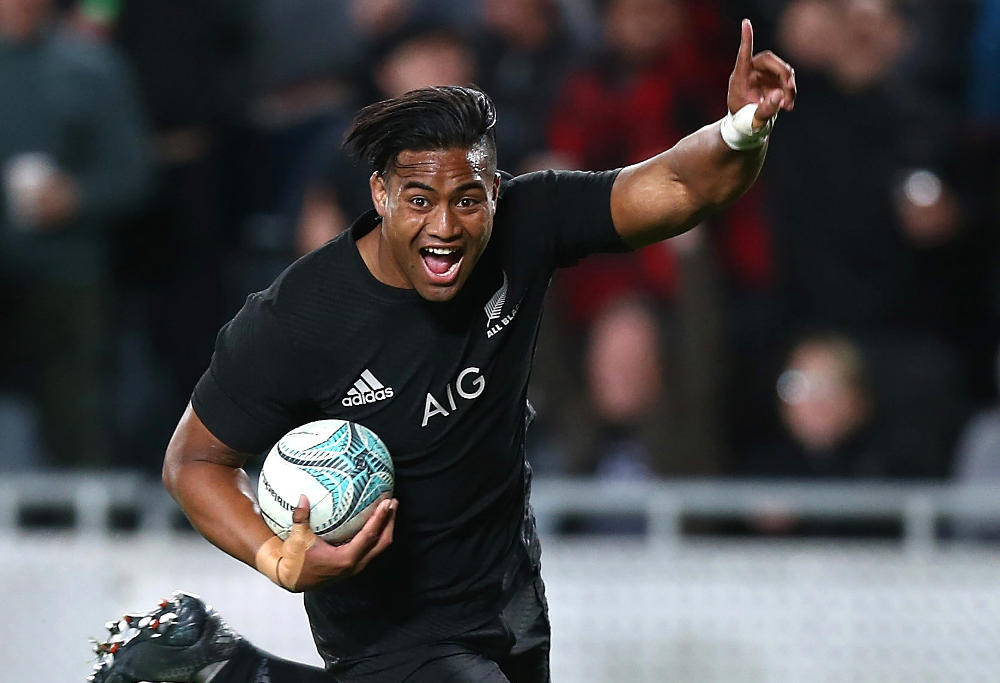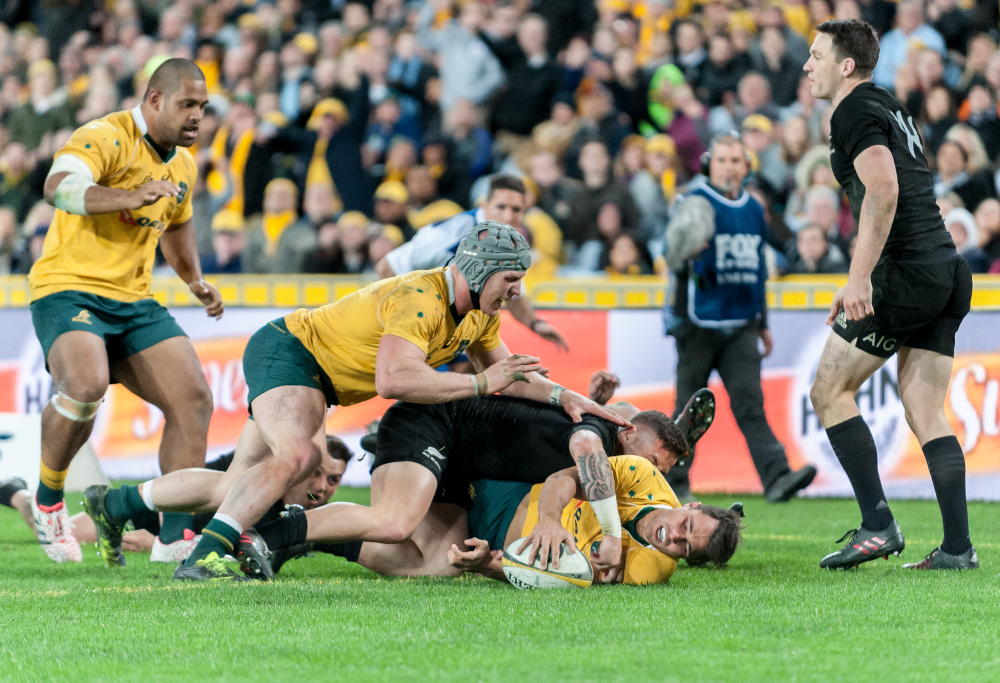With a relative rugby drought this week (with due respect to Canterbury winning the Mitre 10 Cup), it’s an opportune time to have a crack at the challenge set by Roarer ‘Neutral View from Sweden‘, to come up with a blueprint on how to beat the All Blacks.
Given that none of the best rugby coaches in the world have managed this in the last 18 matches, it’s a formidable task and, rather like Michael Cheika volunteering to become Australia’s Ambassador to New Zealand, seems akin to setting oneself up to fail.
I expect that a number of shrewd international coaches do in fact have a very good handle on what is required to win against these All Blacks, but are hamstrung by various factors such as player ability, player availability, player depth, player coaching and development, internal politics and so on.
But for the purpose of this exercise let’s ignore those deficiencies. New Zealand has a higher number of players who are ‘better’ than their opposites – from all Test nations – but in the hypothetical world this article inhabits, let’s also park all of that to the side and assume that we have the cattle to get the job done IF the tactics are right.
So, how does anybody beat this All Blacks team and put an end to this record winning run? Tactics shortly, but first, a few dos and don’ts.
DON’T play them in Auckland.
DON’T play them in anything that resembles a milestone game. Since the 2007 World Cup disaster the All Blacks have become very strong at the mental side of the game; they know how to get up for big occasions.
When they next lose it won’t be a tournament decider, or a special occasion game in Chicago, or the game to beat Cyprus’ ‘Tier Two’ record, nor will it be during the high stakes/high profile British Lions next year.
It will be on an off day during a run of the mill Test match where the All Blacks haven’t quite got their mental preparation right or, like against Ireland in 2013, when it took an 82nd minute try and re-taken conversion to win, it will be the final match of a long, tough season, when subconscious minds have already turned towards home.
DON’T poke the bear. These All Blacks detest the carry-on that Michael Cheika has instigated with the Wallabies. They feel that the Wallabies don’t respect them, which in turn feeds into their own dislike for Cheika and his team.
The All Blacks will be disappointed to lose to anybody but, right now, would find a loss to South Africa, Argentina or Ireland far more palatable than losing to Australia. Whatever Cheika is trying to achieve by his approach, it is counter productive, ensuring only that the All Blacks are mentally ‘up’ each time they play the Wallabies.
DON’T let the All Blacks set the agenda. We all know that starting off full of fire and brimstone for 20-30 minutes before running out of gas is doomed to fail, but on the other hand, playing passively and allowing the All Blacks to play their game is to guarantee a 15-50 score-line.
This is the biggest dilemma coaches face. To win they need to extract maximal optimum performance from all 23 players for all of the 80 minutes. If they determine this isn’t possible, do they put more emphasis into the start of the game, get a lead and try to hang on, or do they keep something in reserve to try to withstand the All Black’s renowned strong finish?
On the face of it, the All Blacks are the masters of what runners, swimmers and cyclists know as the ‘negative split’. Almost certainly however, their fourth quarter domination is less a tactic and more a reflection of their opponents’ inability to sustain their level of their performance over a whole match.
Another common notion; that the All Blacks are ‘fitter’ than their opposition is, essentially, a misconception. All leading professional rugby programs have access to the very best information and equipment, and create similar training environments. Player’s physiological performances are monitored to within an inch of their lives.
The difference lies in skills, the ability to more often execute elite skills when fatigued, and in mental capacity; the ability of individuals to maintain team structures and patterns while under extreme physical stress.

Witness the Wallabies playing the first half last week in Auckland with a clear no-kick strategy, to take the All Black’s counter-attack threat out of the game. But when the pressure went on in the second half, a few players lost composure and resorted to kicking to the All Black’s back three. Aimless kicks which teammates failed to chase in a straight line, and so the tries duly came.
What then about the DOs?
DO match or better the All Black’s rushing defence. Don’t concede cheap, pressure-less metres. The All Blacks are actually very generous here, because they like to play so close to the advantage line; so there are opportunities to make hits in the midfield and set them back.
But make the hits. Henry Speight rushing up and into the All Black midfield might have created the illusion of a Wallabies’ scoring chance, but he came up with nothing except to gift a try to New Zealand.
So DO make every involvement, on attack and defence, count for something.
Now for an obvious one; DO kick your goals. Beauden Barrett is unlikely to kick all of his, so there is an advantage to be had for anyone who can nail all of their opportunities.
That includes you Johnny Sexton, particularly the handy ones for an eight point lead with only a few minutes left.
Unlike Allister Coetzee however, DO recognise that relying on penalty goals is, on its own, not enough of a strategy to win. It’s only one piece of the puzzle.
DO maintain defensive intensity. The All Blacks don’t panic if they get knocked back in midfield; in fact Aaron Smith and TJ Perenara see this as an opportunity. Never for a second think that you’re on top. Every defensive phase must be the same as he one before; keep the defensive line shape and spacing, keep coming forward and keep making effective tackles.
DO kick to contest. Gifting counter attack opportunities is asking for trouble. But swirling high balls into midfield, where pressure can be applied in behind the All Black’s pack is fine. Not all the time mind; vary the play and keep the All Black’s defence in two minds.
DO take the pace out of the game. The All Blacks hate this, anyone wanting to enjoy rugby as a spectacle hates it. Minor injuries, strapping adjustments, slipping over in the scrum, whatever it takes. The All Blacks are patient but they much prefer to feel rhythm and pace in the game.
DO play to your own strengths. Take the best aspects from the All Blacks but don’t be the All Blacks; they are better than you at being themselves. Entering into a shootout will leave you feeling optimistic about what you did with the ball, but on the wrong end of an ‘honourable’ 20-50 loss.
DO clean out accurately, recycle quickly, and punch holes around the fringes and in behind. Keep the All Blacks loosies and halfback honest, in tight to the breakdown. Load the bench with ball runners and plan the replacements to allow this approach to be sustained for the whole match.
DO contest at the breakdown, and disrupt the halfback. Not by over-committing numbers, but by those who are there working like mad Trojans.

DO score points. Obvious enough given that the 18 successive wins have come at an average score of 42-16. Only three times have the All Blacks been kept under 30 points and, not co-incidentally, their lowest score, 20 points in the World Cup semi-final against South Africa, was also their closest match, 20-18.
Clearly, you’re not going to beat the All Blacks 12-9; 20 points minimum, probably closer to 30 is going to be needed. Which means tries. Use the ball constructively and positively, find that ‘g-spot’ that sits in-between bold and reckless, and then work off a strong set-piece when in the attacking 22.
All of that said, an All Blacks loss is more likely to come from their own failings on a given day, as much as anything the opposition does. Look at Adam Coleman’s try last week, coming straight after four re-set scrums and a good two minutes flushed down the drain.
The All Blacks were bored; this wasn’t rugby as they know it, and they were vulnerable; at least until they got switched back on.
The final say is perhaps best left to someone who actually gets to attempt it for real, Leinster and Ireland No 8 Jamie Heaslip. He gets two shots over the next few weeks, and this week commented on Ireland’s chances.
“I’ve played in two games where we’ve almost taken an All Blacks scalp but in both situations it boiled down to that last 10-minute window,” said Heaslip, who indicated that the biggest learning he has taken from his experiences of playing the All Blacks is that the bench is utterly pivotal. That was underlined in 2013, when Steve Hansen’s changes in the second half had a major effect.
“You’ve got to have 23 players all singing off the same hymn sheet, all knowing what they’ve got to do, and are mentally and physically ready for that intensity,” he said.
So far so good, Heaslip agrees with one of our indicators above, that all 23 players must deliver. But then he goes on further;
“The learnings [are] in terms of that they are not unbeatable. They are just 15 blokes on a field against you. They might be 15 big blokes or 15 good players, but at the end of the day they are just 15 other men in front of you.”
So which one is it Jamie? 23 or 15? Expect Heaslip to give his all in Chicago and Dublin, and make a huge nuisance of himself. But on this evidence, don’t expect him to be matching Keiran Read’s clear decision making in the 79th minute.
And until a side matches the All Black’s clarity of thought and self-belief, man for man, it’s hard to see this record run being interrupted any time soon.































































































